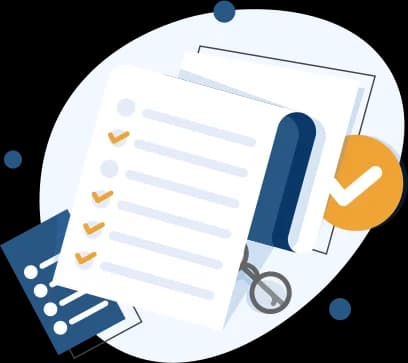Environmental Clearance (EC) – A Complete Overview
Environmental Clearance (EC) is the statutory approval required for initiating certain notified projects in India. This clearance ensures that proposed development activities are environmentally sustainable and compliant with government norms.
The Ministry of Environment, Forest and Climate Change (MoEFCC) is the central authority responsible for granting EC to projects classified under Category A, while State Environmental Impact Assessment Authorities (SEIAAs) handle Category B projects at the state level.
Before any site development begins, the project proponent must secure an Environmental Clearance Certificate. Additionally, the MoEFCC must make a decision within 105 days of receiving the final Environmental Impact Assessment (EIA) and Environmental Management Plan (EMP) reports.




Registration Form
Let our CA-certified experts handle your business registrations , legal compliance, and tax needs — while you focus on growing your business with peace of mind.
What You Get:
- Personalized Expert Guidance
- Hassle-Free Documentation
- Fast & Transparent Process
- Dedicated Support Team
- Affordable & Flexible Plans
- Secure & Confidential Handling
- Timely Updates & Reminders
Free Consultation by Expert
Features That Empower You
We provide end-to-end solutions with expert support, ensuring your journey is seamless and stress-free.
Balancing Development & Environment
EC ensures a balanced approach to economic development while protecting natural resources and ecosystems.
Boosting Environmental Performance
Environmental Clearance supports sustainable practices, enhancing overall environmental outcomes through responsible development.
Legal Compliance
Projects with valid EC are in compliance with environmental laws, minimizing legal risks and regulatory violations.
Encouraging Public Involvement
The EC process includes mechanisms like public hearings that improve transparency and stakeholder engagement.
Economic Sustainability
Environmental Clearance helps foster economic benefits by encouraging eco-friendly, long-term project planning.
Conservation of Resources
By mitigating environmental damage, EC promotes resource conservation and ecological balance.
Who Needs to Register?
Balancing Development & Environment
EC ensures a balanced approach to economic development while protecting natural resources and ecosystems.
Boosting Environmental Performance
Environmental Clearance supports sustainable practices, enhancing overall environmental outcomes through responsible development.
Legal Compliance
Projects with valid EC are in compliance with environmental laws, minimizing legal risks and regulatory violations.
Encouraging Public Involvement
The EC process includes mechanisms like public hearings that improve transparency and stakeholder engagement.
Economic Sustainability
Environmental Clearance helps foster economic benefits by encouraging eco-friendly, long-term project planning.
Conservation of Resources
By mitigating environmental damage, EC promotes resource conservation and ecological balance.
How To File It Online?
Follow this step-by-step guide to ensure your response is submitted correctly

Cover Letter
A letter introducing the project and seeking clearance.
Detailed Project Proposal or Feasibility Report
A comprehensive description of the project and its feasibility, including environmental considerations.
Environmental Impact Assessment (EIA) Report
A report assessing the potential environmental impacts of the project.
Site Plan and Location Maps
Maps indicating the project site, including details about land acquisition.
Local Authority Consent
Consent from the local authorities for the project's development.
Details of the Project Proponent
Information about the entity or individual proposing the project.
Public Hearing Report
A report on public consultations or hearings conducted for the project.
Environmental Management Plan (EMP)
A plan detailing measures to mitigate environmental impacts during the project's life cycle.
Registered Address Proof of the Applicant Entity
Proof of the registered address of the applicant entity or individual.
Personal Details of the Authorized Applicant
Personal identification details of the individual authorized to apply for clearance.
Terms of Reference (ToR), Previous EC, and Certified Compliance Reports
If applicable, include the Terms of Reference, previous Environmental Clearances, and compliance reports.
Any Other Relevant Information
Any additional information pertinent to the project or required by the authorities.
1Eligibility Checklist for Filing GST Registration
- Businesses with turnover over INR 40 Lakhs (INR 20 Lakhs for special states).
- Service providers with turnover over INR 20 Lakhs (INR 10 Lakhs for special states).
- Businesses previously under old tax structures must migrate.
- Non-residents supplying taxable services in India require registration.
2Other Entities Eligible to Apply
- Inter-state goods suppliers.
- Reverse charge liable entities.
- Input service distributors.
- E-commerce operators.
3Documents Required for GST Registration Online
- PAN Card
- Aadhar Card
- Company Registration Certificate
- Identity & Address Proof
- Photographs
- Business Address Proof
- Bank Statement
- Digital Signature Certificate
- Lease Agreement
- Authorization Letter

Key Benefits
- Ensures legal compliance with environmental regulations.
- Promotes sustainable development practices.
- Minimizes environmental risks and hazards.
- Improves social and community relations through consultations.
- Boosts project credibility and acceptance.
Pitfalls to Avoid During Filing
Common errors that can delay your submission
Consent to Establish (CTE)
Obtain approval before beginning construction.
CTE is necessary before setting up the project.
Consent to Operate (CTO)
Apply for consent before commencing operations.
CTO is required to begin industrial operations.
Half-Yearly Certified EC Compliance Reports
Submit certified compliance reports every 6 months.
Provide documentation of ongoing compliance with EC.
Voluntary Green Building Certification
Optional certification for sustainable building practices.
Shows commitment to environmental sustainability.
Grant/Rejection of EC
Approval or rejection within 45 days.
The competent authority makes a decision after committee recommendation.
Transferability of EC
EC can be transferred to another entity.
Valid EC certificates can be transferred during their validity period.
| Serial Number | EC Grant | EC Renewal |
|---|---|---|
| 1 | Approval granted after detailed assessment | Renewal based on compliance reports |
| 2 | Requires full EIA and public consultation | Submission of half-yearly compliance reports |
| 3 | Decision within 45 days after committee recommendation | Renewal timeline varies based on project type |
| 4 | Subject to forest, wildlife, and other clearances | Valid for 5 to 30 years depending on project type |
| 5 | Can be transferred to another entity | Transferable within validity period with application |
Streamlined Filing Process
- Grant/Rejection Decision: 45 days post committee recommendation.1
- EC Validity Period: 5 to 30 years based on project type.2
- Transfer Process: Available during EC validity period.3
- Fees: Government does not charge direct online fees for EC.4
- Additional fees may apply based on project nature and state policies.5

Why Trust DoStartup?
Professional services with guaranteed satisfaction
Application Submission
Submit the EC application in Form 1 along with Supplementary Form 1A after finalizing the project site.
Application Screening
The SEAC evaluates the application to determine whether a detailed EIA study is necessary for Category B projects.
Scoping
Prepare and submit the Terms of Reference (ToR) highlighting key environmental concerns to SEAC or EAC.
Public Consultation
Conduct public hearings and stakeholder engagements to gather feedback from local communities.
Appraisal by Expert Committee
The EAC or SEAC reviews the application, EIA report, and public consultation outcomes to recommend whether to grant EC.
Forest Clearance
Obtain clearance under the Forest Conservation Act, 1980 if required for the project.
Wildlife Clearance
Ensure wildlife clearance under the Wildlife Protection Act, 1972 from the National Board for Wildlife (NBWL).
Coastal Regulation Zone (CRZ) Clearance
Obtain CRZ clearance as per the 2011 Notification for projects in coastal areas.
Central Ground Water Authority (CGWA) NOC
Get the NOC from CGWA if the project involves groundwater extraction.
Fire Department NOC
Ensure obtaining the NOC from the Fire Department as part of the safety protocol.
Distance from Forest Boundary Certificate
Provide a certificate indicating the distance from the forest boundary for the project.
Airport Authority of India (AAI) Height Clearance NOC
Obtain the NOC from AAI if the project exceeds specific height limits near airports.
National Highway Authority of India (NHAI) NOC
Secure the NOC from NHAI for projects near national highways.
Frequently Asked Questions
Have a look at the answers to the most asked questions